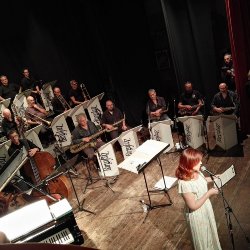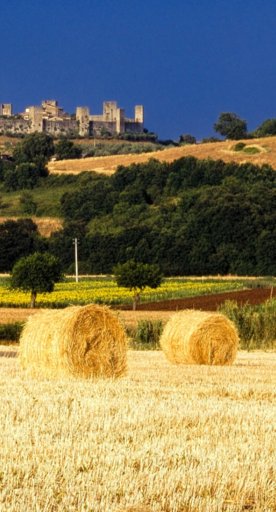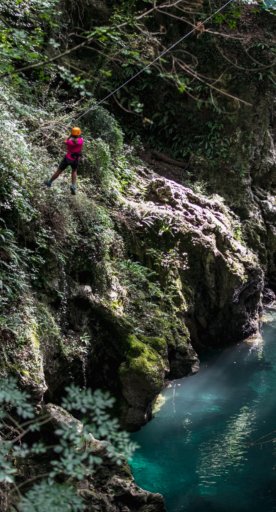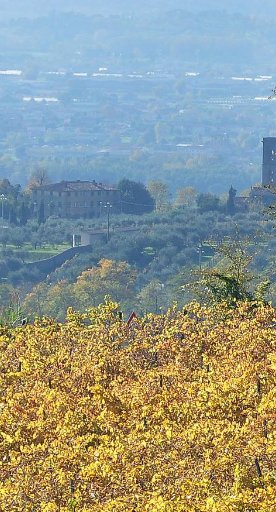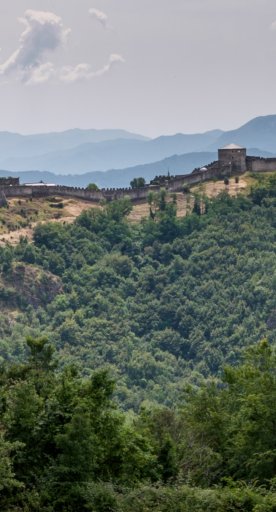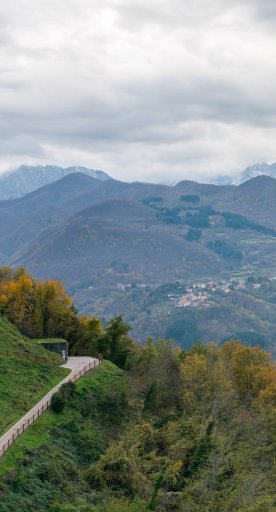Symbols and legends along the Matildica del Volto Santo
In the footsteps of the Great Countess with popular traditions and mysteries
Through the lush nature of the mountains, hills and valleys of Garfagnana, we head to discover the lands of Matilde di Canossa.
The Via Matildica del Volto Santo is an itinerary that's 285 kilometres long and crosses 3 Italian regions (Lombardy, Emilia, and Tuscany). It's rich in culture, traditions, beautiful landscapes and legendary stories. It starts from Mantua and reaches Lucca, passing Reggio Emilia.
In Tuscany, it shares part of its route with both the famous Via Francigena and the Via del Volto Santo, in particular from Castelnuovo di Garfagnana to San Martino Cathedral in Lucca where the statue of the Holy Visage is kept.
-
1.Il Volto Santo (Holy Visage)
-
2.The Devil's Bridge
-
3.Symbols in the Collegiate Church of San Cristoforo
-
4.Monte Forato
Il Volto Santo (Holy Visage)
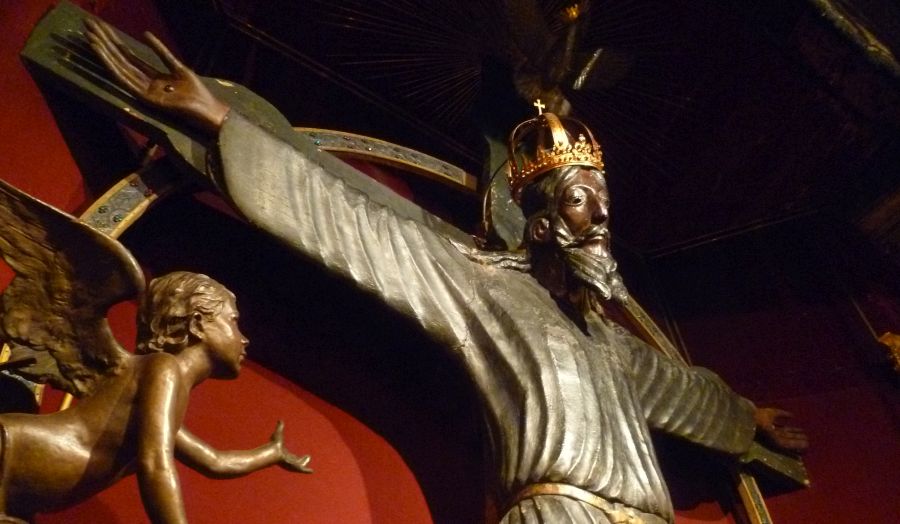
Tradition has it that the wooden crucifix kept in Lucca - revered since the Middle Ages throughout Europe as one of the most important relics of Christianity - was not made by humankind, but in fact has miraculous origins. It's linked to leobinian legend: according to the deacon of Lucca, Leobino, the statue was made by the disciple of God, Nicodemus, and then made a "miraculous journey" to Lucca.
Nicodemus, eager to carry out the work but unable to do so, prayed for divine intervention to help him and the next day the face of the Lord appeared on the sculpture as he had imagined. Fearing that the statue would be destroyed by the barbarians, he threw the work into the sea before it reached the port of Luni in La Spezia on a ship without sails and without crew. Once on the ground, it was loaded on an ox cart, where, once again by divine will, he arrived in Lucca.
The Devil's Bridge

Along the path in the footsteps of Matilda, you will find many places populated by centuries-old traditions and legends. In Borgo Mozzano, the final point of stage 10 of the Via Matildica, is the Ponte della Maddalena over the Serchio river, built at the behest of Matilde di Canossa. Otherwise called the Devil's Bridge, the origin of this name is shrouded in an ancient legend.
Characterized by an arched humpback shape, it was attributed to the devil in popular tradition, as was the case for any particularly daring works. It's said that the mason in charge was distressed by the delays in construction and invoked the help of the devil. In exchange for the immediate construction of the bridge, the devil asked to possess the soul of whoever crossed the bridge first.
With the agreement made and bridge erected, the bricklayer regretted his promise and together with the parish priest decided to remedy the agreement by sending a dog as the first living creature to cross the bridge. The devil was furious and possessed the dog, throwing himself into the river. It's said sometimes that the dog hovering near the bridge represents the devil, still in search of the soul promised to him.
Symbols in the Collegiate Church of San Cristoforo
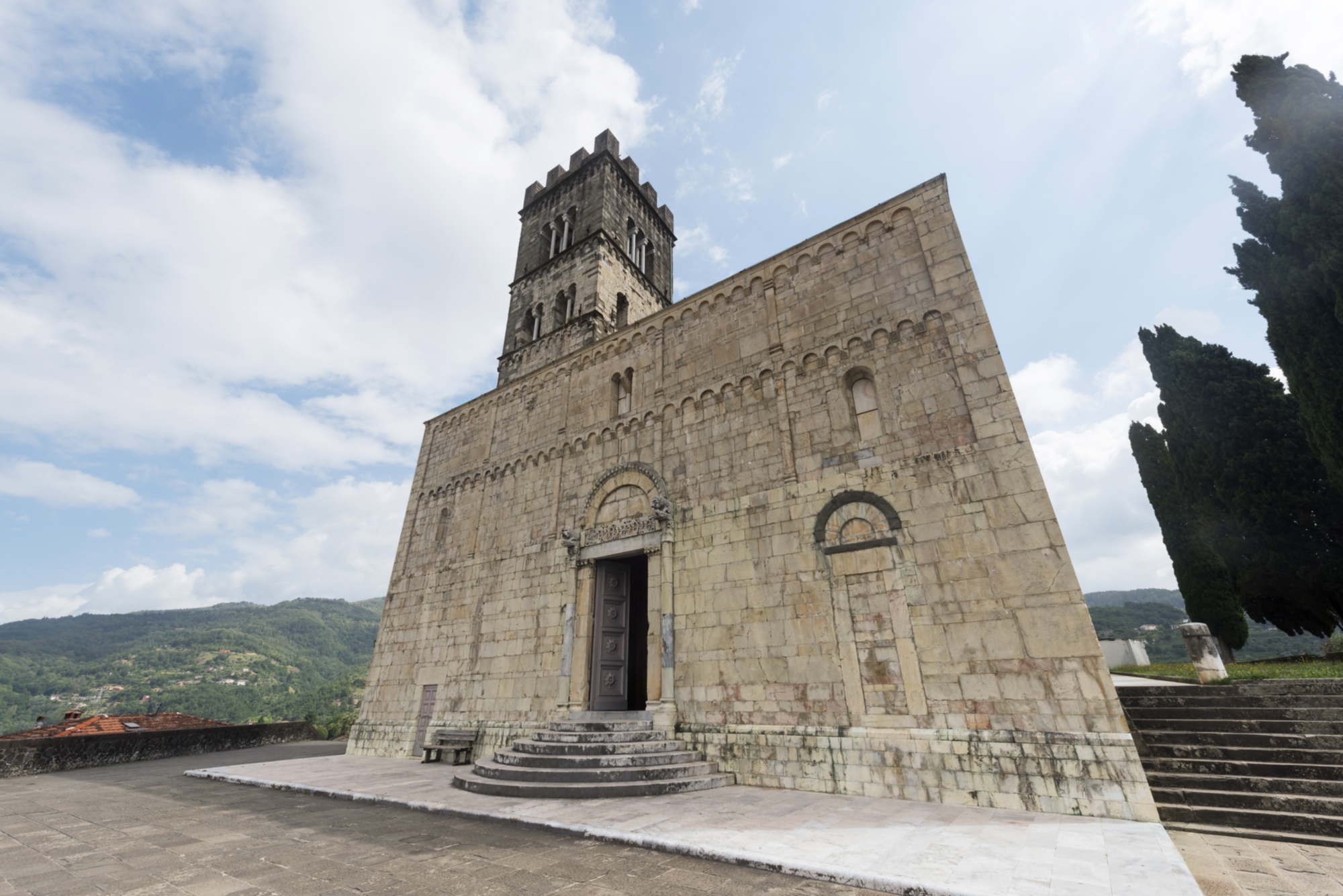
Barga, one of the most beautiful villages in Italy and found at the end of stage n. 9, is also steeped in mystery and dark secrets that surround the Collegiate Church of San Cristoforo, the village cathedral. In the doorframe on the right side of the main door, there's an engraving showing a series of Latin and Greek letters and several symbols that are repeated three times. No one has ever been able to interpret the engraving, even illustrious figures such as Charles V, Pope Paul III and important scholars.
The obscure symbols of the Collegiate Church of San Cristoforo still remain undeciphered today.
Monte Forato
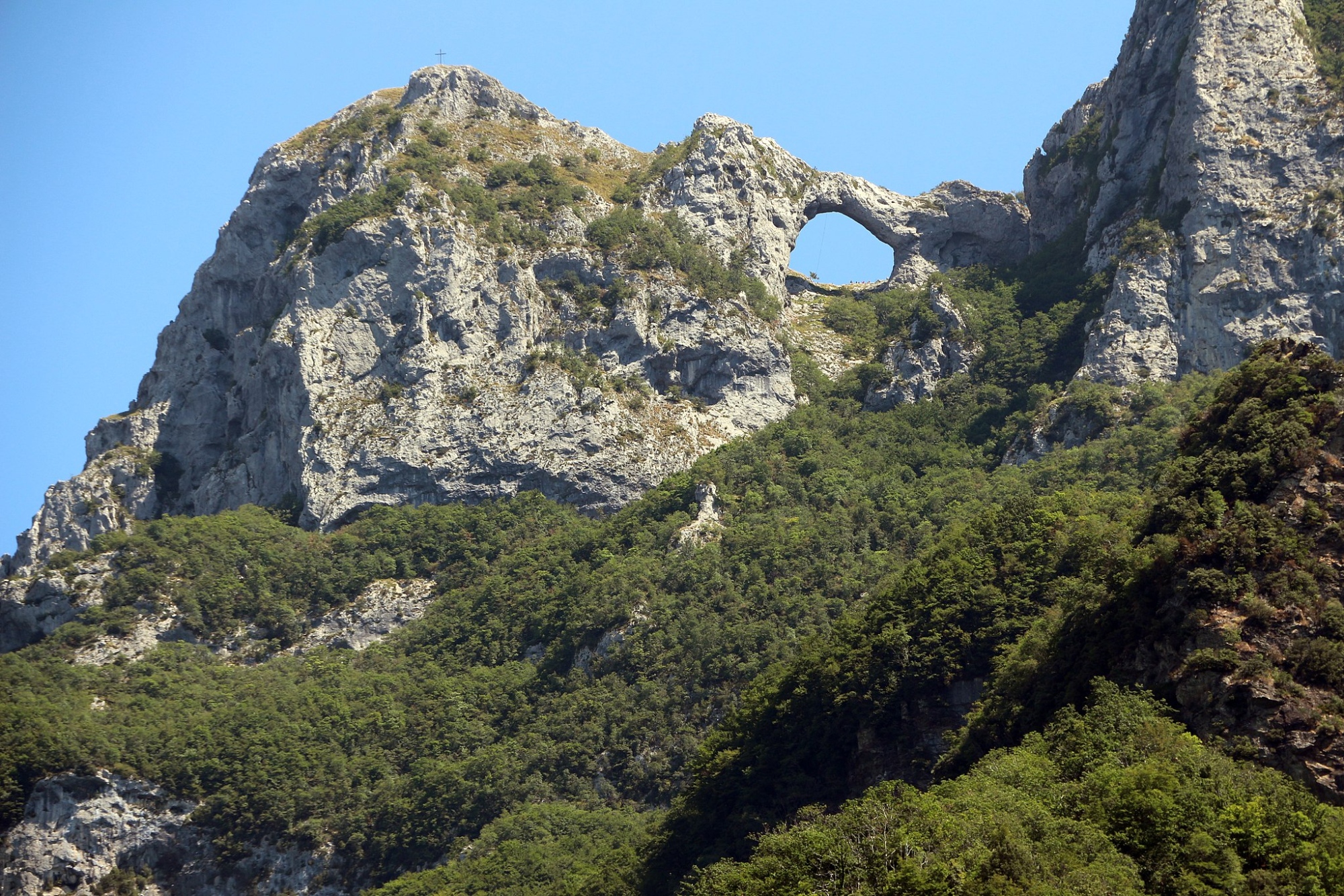
In the last strip of Garfagnana on the border with Emilia-Romagna, the highest inhabited village in the Apennine chain, San Pellegrino in Alpe, is the custodian of another ancient legend involving the devil.
St. Pellegrino, son of the King of Scotland Romano, from the moment of his baptism, performed miraculous events and refused a wealthy life, even giving up his kingdom, to follow the faith. He set out for the Holy Land, a journey on which prodigious episodes occurred by his own hand, such as the conversion of some brigands he came across along the way. On his return to Italy, tempted and then impatient with the Devil, he slapped him so hard that he slammed him against the Apuan chain, so hard that he left a hole in a mountainous relief, the well-known Monte Forato, a natural cavity clearly visible from the village of San Pellegrino in Alpe.

